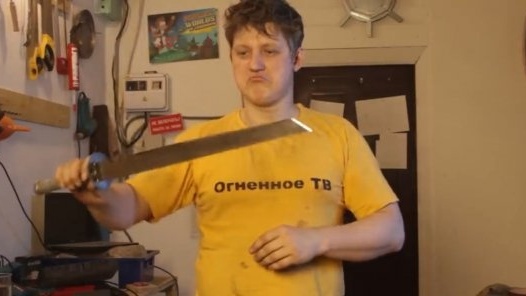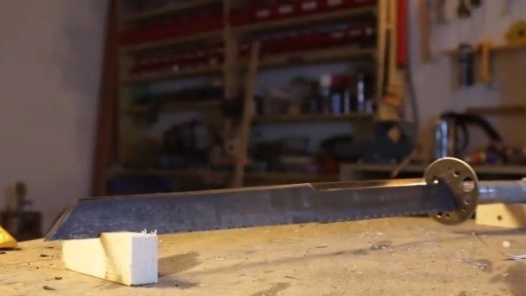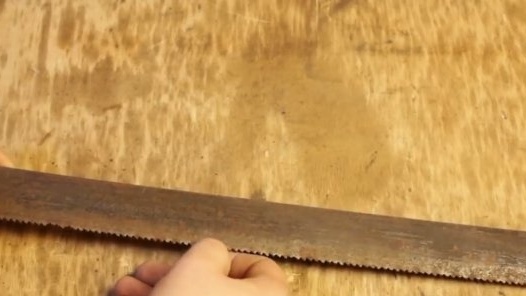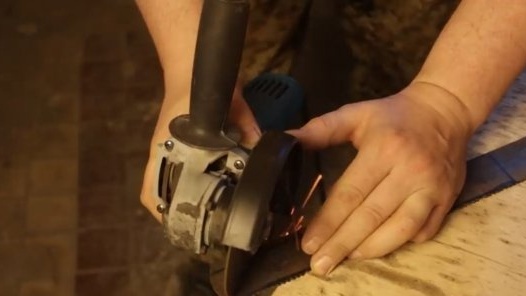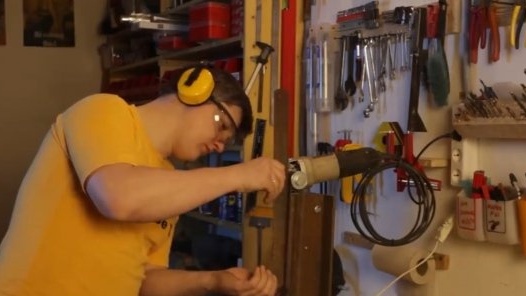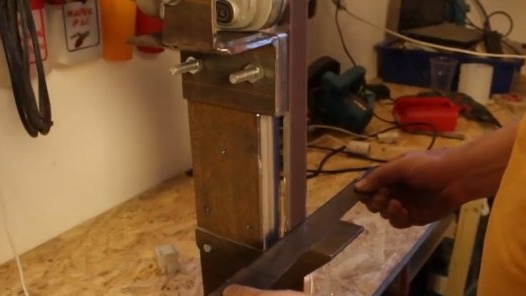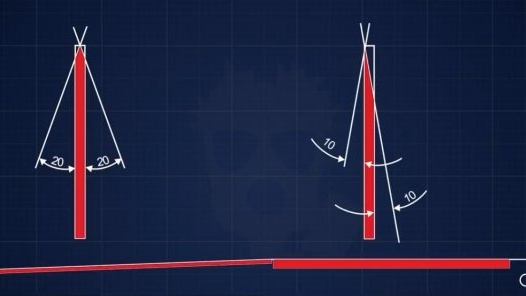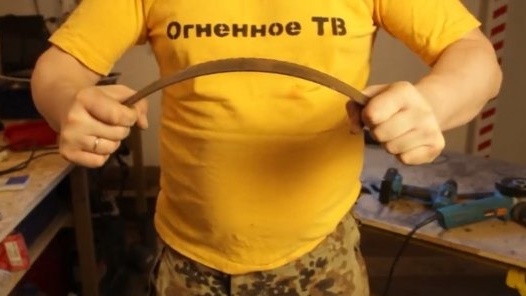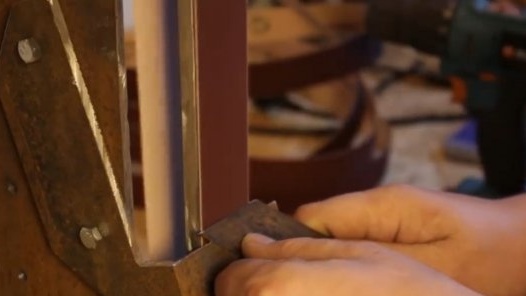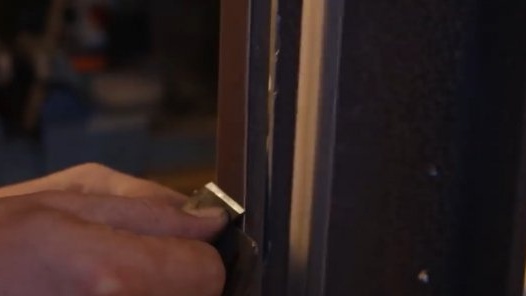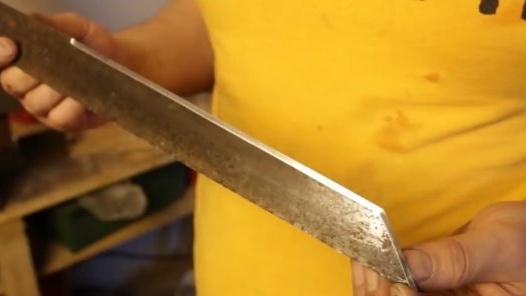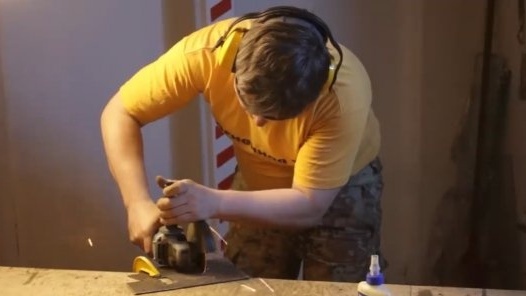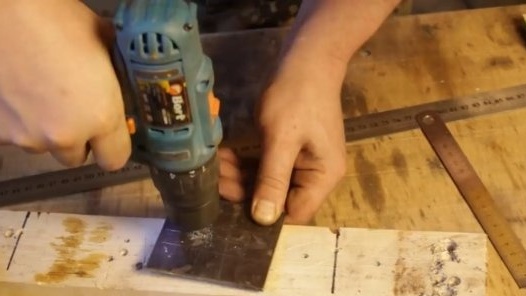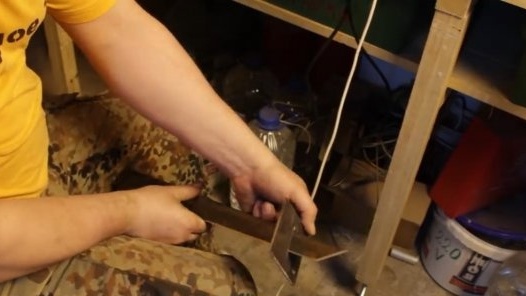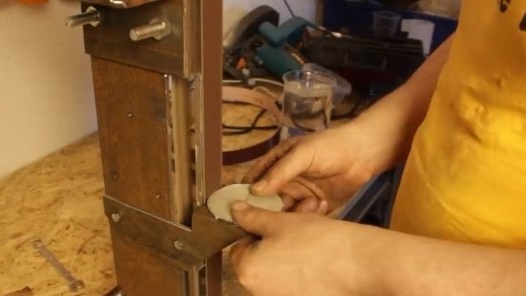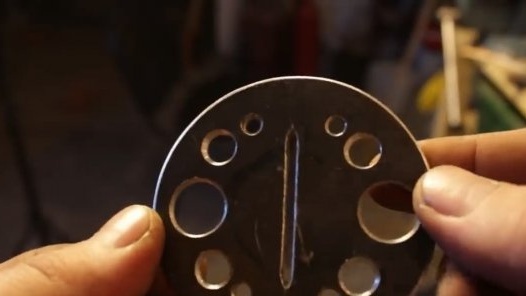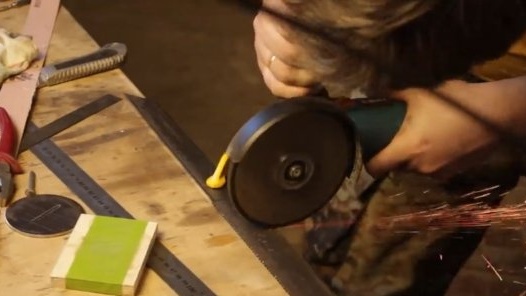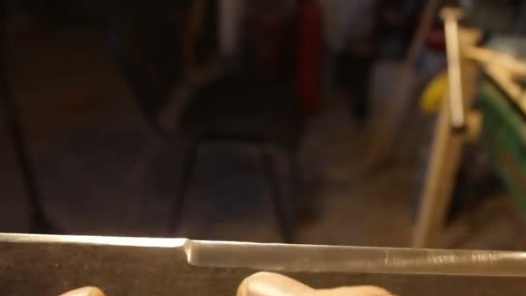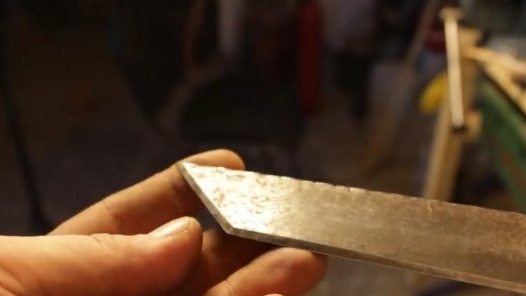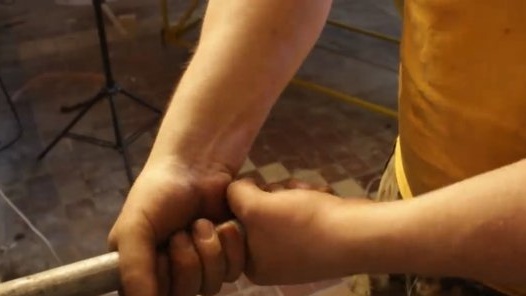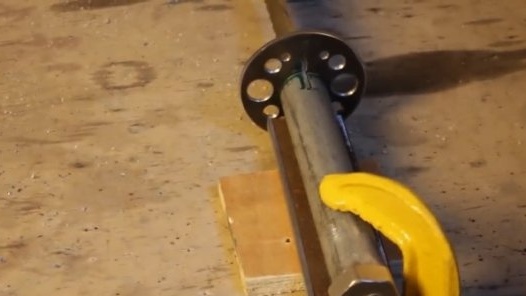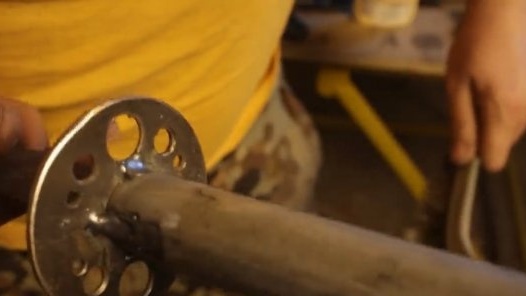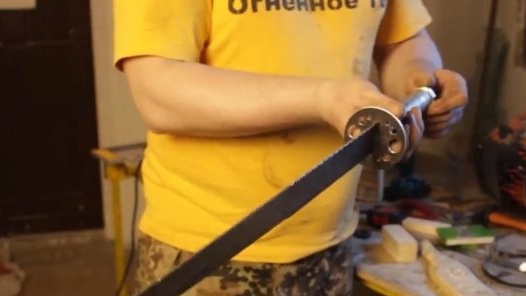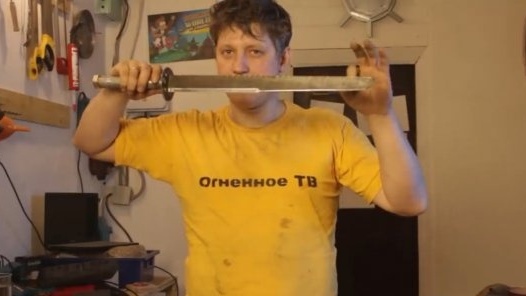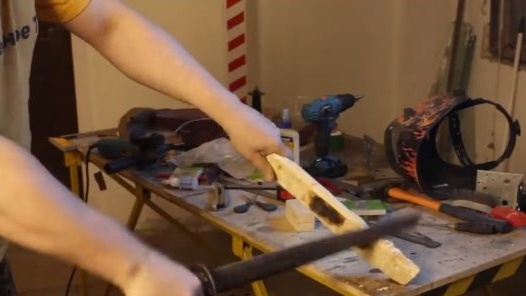Greetings the inhabitants of our site!
And today, we, together with the author of YuoTube of the Fiery TV channel, will make a post-apocalyptic katana from such a Soviet mechanical saw.
Well, purely technically, the katana has a blade length of 61 cm, but here we will get 45 cm at best, so it will be more like a “wakizashi”, that is, a short sword. Here it is, that same canvas.
Rusty, dead, even in some places where there are not enough teeth, but the main thing is that the stigma with the Soviet quality mark and the steel grade have been preserved.
This is a high-speed steel with a huge carbon content and resistance to overheating, which means you can fry a freshly caught radtarakan on such a katana and not be afraid of the tempering of steel, because it only happens at temperatures above 500 degrees!
The steel is very hard and it does not even work out normally to mark the markings with a scriber, so we roughly mark the canvas with a marker.
Divide the length of the canvas in half, in order to make different sharpening angles in different areas. The author wants to make a kind of post-apocalyptic multitool, that is, a multifunctional tool. Each section of the blade will have its own purpose and its sharpening angle, but more on that later. Carefully cut off all unnecessary grinder.
Now on the grinder we align the cropped edges, if this is not done, then sharpening will be much more difficult.
The point of the sword will be made in the style of Japanese swords, this shape will give the tip good strength. In front of the blade, we completely remove the teeth, because if you suddenly have to stick it into the zombies, then so that it does not get stuck there. And just for the best zombie penetration from the middle of the blade is narrowing.
The front of the blade will have a sharpening angle of 40 degrees. Since this steel is very hard, and therefore brittle, and in order to avoid chips when cutting branches or splitting pieces of wood, it is better to make just such an angle. The blade of the saw has a thickness of only 2 mm, and therefore we will not make descents, but immediately make approaches to the cutting edge. Again, to maintain greater strength in the front, as all the strongest blows will fly here.
In the other half of the blade we will make a one-way descent at an angle of 10 degrees, and on the reverse side there will be one approach, also at 10 degrees, this will result in a sharpening angle of 20 degrees, which will be easy to correct. This site will be used for planing wood and slicing mutafruit.
In this half of the blade, we will not remove the teeth, we will leave them to perform sawing work. Such a multifunctional machete is obtained.
After cutting the teeth from the front and leveling the surface on the grinder, it can be seen that in some places there are small potholes and a small zigzag shape of the butt, because the saw teeth are spread apart for greater efficiency, but the author did not remove the metal to the ideal state of the butt, the more metal the stronger the blade.
By the way, the blade is very flexible and it is not so easy to break it.
We set the table at an angle of 20 degrees, change the sandpaper and begin to process the blade.
In exactly the same way, we sharpen the leads in the front. As has been said more than once, the metal is very hard, and the emery paper sits on it very quickly and literally in a couple of minutes it starts to take off the metal noticeably slower, but maybe this is such bad shit ...
And now we are going to make the guard; without it, the sword will look unfinished. To do this, take a piece of steel 3 mm thick. We mark, cut and drill 2 holes with a 2 mm drill. It is also necessary to cut the gap between the two holes with a grinder.
The blade of a sword should pass into this gap. We finish the file to the desired size and it turns out something like this.
Then you need to draw a circle with a compass, and then cut it with a grinder. To make the circle more correct, the author pasted the masking tape and drew the circle again.
After that, we remove everything superfluous on the grinder, though the adhesive tape comes off the steel very quickly, this is not very convenient, well, we take off the chamfer around the perimeter to make it more accurate.
Then, with a step drill, it is necessary to drill a couple of holes in order to reduce the weight of the guard without its great weakening, and it looks more pleasant anyway.
It is very difficult to remove a large amount of this steel from the blade on the grinder and it will take a bit of sandpaper, so the author decided to first remove most of the steel using a grinding wheel with a grinder. Yes, of course, you can accidentally screw up and remove more than necessary, but there is a hope that everything will work out fine.
Having set the table at an angle of 10 degrees, we begin processing the blade. Here it becomes noticeable that the uncut teeth begin to interfere, sometimes it feels right like the canvas is jerking due to the undulating butt. Because of it, you have to hold the blade only in one direction, towards yourself, otherwise the teeth can cling to the glove and you can stain the surface. Here is a blade in the end turned out, in two places it is clear that the master overdid it with the grinder, and took off a little too much.
It would be possible to remove some more metal on the grinder, but it could take a lot of time, this steel is very difficult to grind. The author did not make the approach from the back, so as not to cut himself until he completes the dagger completely. The handle will be made from a piece of pipe 3 \ 4. At the end of the pipe, we will thread the plug.
As conceived by the author in this multifunctional sword, even the handle will be useful. Inside this handle you can store something useful, for example, a flint, or a sewing kit.
The master chose the diameter of the pipe under his hand, so as to confidently clasp it. But the length must be chosen so that it can be taken with both hands. But for the second hand, it was decided to leave less space than necessary. Enough space to grab, and an extra centimeter of pipe still weighs something, without it it will be even easier.
The blade will go into the handle and hold on to welding. To do this, we make a few cuts. The excess protruding parts are painted over with a marker, then cut off.
We collect the sword completely, clamp it with clamps, fix it so that nothing skews, otherwise it will be a pity to nakosyachit at the very end.
Welding is completed and almost everything is ready.
The master boiled up the places where the blade joined the handle and in two places grabbed the guard to the handle, then gently grinded it on the grinder so that it was more pleasant to stay and everything was ready.
Yes, the round handle can be rotated in the hand, then we’ll come up with something to fix it. As a result, the sword turned out to be straight generally comfortable, it lies well in the hand. Due to the heavy handle the sword has good controllability, the blade does not fall forward. The author wanted to conduct normal tests of this sword, but did not sharpen it to razor sharpness. Let us leave the severity as it is. The author then promises to test it and shoot a couple of beautiful shots in the slow mo. And for good, you also need to polish it, so that it glides smoothly and does not get stuck anywhere.
But not even imprisoned, he shreds normally. And planing is also normal.
It turned out a household knife, because by law it can not be considered cold weaponssince the thickness of the butt is less than 2.6 mm. As a result, the knife was not heavy. It seems heavier than it actually is. That's all. Thank you for attention. See you soon!

